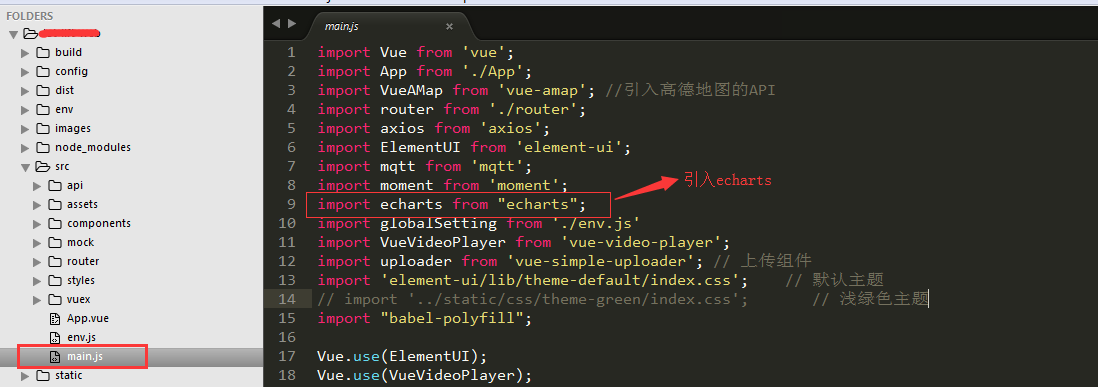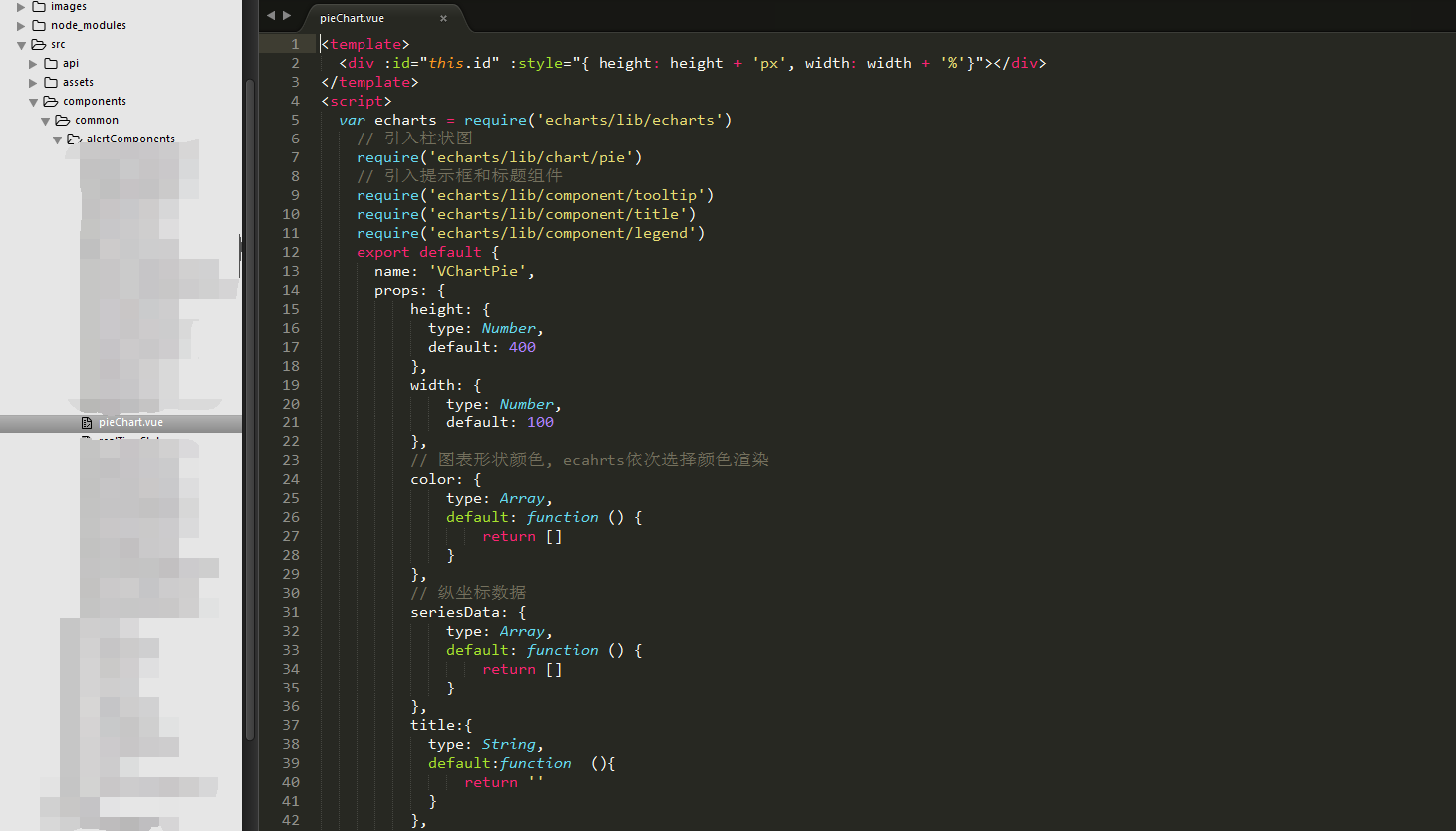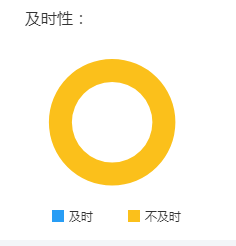一、需求
1、由于我们项目中有个页面,需要统计分析的功能
2、所以才想到vue中引用echart组件(备注:我们是利用vue-cli脚手架,初始化vue项目)
二、如何实现这个需求
1、引入Echart包,通过以下命令安装Echarts
![]()

2、写一个环形图的子组件

该组件比较全的代码如下:
<template>
<div :id="this.id" :style="{ height: height + 'px', width: width + '%'}"></div>
</template>
<script>
var echarts = require('echarts/lib/echarts')
// 引入柱状图
require('echarts/lib/chart/pie')
// 引入提示框和标题组件
require('echarts/lib/component/tooltip')
require('echarts/lib/component/title')
require('echarts/lib/component/legend')
export default {
name: 'VChartPie',
props: {
height: {
type: Number,
default: 400
},
width: {
type: Number,
default: 100
},
// 图表形状颜色, ecahrts依次选择颜色渲染
color: {
type: Array,
default: function () {
return []
}
},
// 纵坐标数据
seriesData: {
type: Array,
default: function () {
return []
}
},
title:{
type: String,
default:function (){
return ''
}
},
orient:{
type: String,
default:function (){
return 'vertical'
}
},
legendTop: {
type: Number,
default: 40
},
legendRight: {
type: Number,
default: 4
},
itemGap: {
type: Number,
default: 8
},
radius:{
type: Array,
default: function () {
return []
}
},
center:{
type: Array,
default: function () {
return []
}
}
},
data() {
return {
}
},
computed: {
// 生成一个随机id, 实现图表组件的复用
id: function () {
return parseInt(Math.random() * 1000000)
},
legendData: function () {
let legendData = []
this.seriesData.forEach(function (elem) {
legendData.push(elem.name)
})
return legendData
}
},
methods: {
renderPieChart: function () {
if (this.chart) {
this.chart.dispose()
}
// 初始化echart
this.chart = echarts.init(document.getElementById(this.id))
// 自定义eChart样式 官方配置指南(http://echarts.baidu.com/option.html#yAxis.splitLine.lineStyle.color)
this.chart.setOption({
title:{
text:this.title,
textStyle: {
fontSize:16,
fontWeight:100,
},
},
legend: {
icon: 'stack',
data: this.legendData,
itemGap: this.itemGap,
itemWidth: 12,
itemHeight: 12,
top: this.legendTop,
right:this.legendRight,
orient: this.orient,
},
grid: {
left: 0,
right: 20
},
color: this.color,
tooltip: {},
series: {
type: 'pie',
radius: this.radius,
data: this.seriesData,
labelLine: {
normal: {
show: false
}
},
label: {
normal: {
show: false,
}
},
center: this.center,
}
})
}
},
watch: {
seriesData(){
this.renderPieChart()
}
},
mounted() {
this.renderPieChart()
}
}
</script>3、在父组件中引用子组件

该父组件中比较全的代码如下:
<template>
<el-row>
<el-col :span="8">
<div class="grid-content bg-purple maintainInfo">
<!-- 及时性 -->
<div class="ridingQualityEchart">
<vChartPie :seriesData="timeliness.series" :color="timeliness.color" class="areaBar" :height = "maintainHeight":title="timeliness.title" :orient ="timeliness.orient" :legendTop="timeliness.legendTop" :legendRight="timeliness.legendRight":radius="timeliness.radius":center="timeliness.center" :itemGap="timeliness.itemGap"style="margin-left:20px;padding-top:10px"></vChartPie>
</div>
</div>
</el-col>
</el-row>
</template>
<script>
import vChartPie from './pieChart.vue'
export default {
data() {
return {
timeliness:{
title:'及时性:',
radius: ['35%', '55%'],
center:['34%','51%'],
orient:'vertical',
legendTop:200,
legendRight:105,
itemGap:35,
series: [
{value:335, name:'及时'},
{value:100, name:'不及时'}
],
color:['#289df5', '#fbc01b'],
}
}
},
components:{
vChartPie
},
created(){
this.getMaintainData();
},
methods:{
getMaintainData(){
let self = this;
self.$axios.post('你的接口'+'&startTime='+ self.startDate.getTime()+'&endTime='+ self.endDate.getTime()).then((res) => {
let onTime = res.data.data.onTime;
self.timeliness.series = [];
onTime.forEach(function(item){
self.timeliness.series.push(item);
})
});
}
}
}
</script>运行后的效果如下:

来源:oschina
链接:https://my.oschina.net/u/4267928/blog/3867003